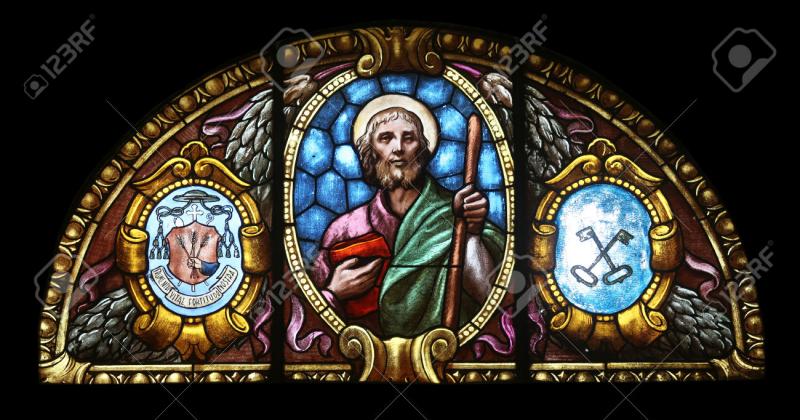Spanish knights who drove the Moors from their homeland, and then conquered Central and South America, took St. James as their protector.
Today, July 25, the two-week-long celebration in the small Spanish city of Santiago de Compostela will reach its highpoint with High Mass in the Cathedral of Santiago, the Cathedral of St. James. A capacity crowd of 1200 worshippers will fill the cathedral, among them the king of Spain, or his representative from the Royal Family. Amid half a month of feasting, and dancing, and music, and fireworks, the Mass on the feast day of the apostle and martyr is the heart of Catholic Spain’s national festival.
But how did St. James the Greater get to Spain?
Before His Ascension into Heaven, Christ instructed the apostles, “Go forth and teach all nations.” Tradition tells us that James carried the gospel to the far end of the Mediterranean, to the Roman province of Hispania—modern-day Spain and Portugal. We know that he was back in Jerusalem by A.D. 44, because that year, during King Herod Agrippa’s persecution of the Church, James was arrested and beheaded. He was the first of the apostles to suffer martyrdom.
According to legend, after St. James’ martyrdom in Jerusalem angels placed his body in a rudderless ship that sailed to Spain where, after several other miraculous events, it was translated to Compostela in the northwestern province of Galicia. About the year 814, a Christian hermit name Pelayo followed a star out to an empty field where he found the grave of St. James. The chapel built over the apostle’s relics was the forerunner of the magnificent cathedral that preserves the relics today.
St. James, his brother St. John, and St. Peter comprised the inner circle of Christ’s apostles—that is why this James is known as “the Greater,” to distinguish him from the other apostle named James, known, to avoid confusion, as “the Lesser.”
James and John were the sons of Zebedee and Mary Salome. They were fishermen, and it appears that they had a business partnership with St. Peter and his brother St. Andrew.
Peter, James, and John witnessed marvels the other apostles did not see, including the Transfiguration and the raising of Jairus’ daughter from the dead. They were also with Christ in the Garden of Gethsemane where they witnessed His Agony in the Garden—until they dozed off.
To have the relics of an apostle, and of one of Christ’s favorite apostles besides, was a tremendous privilege. During the Middle Ages, the shrine of Santiago de Compostela—St. James of the Field of the Star—was regarded as one of Christendom’s top three pilgrimage destinations, along with Jerusalem, which was first, and Rome, which was ranked second. There is no telling how many pilgrims flocked to the tomb of St. James, but we do know a few of the more famous.
St. Francis of Assisi set out for Compostela in 1213 and did not return home to Assisi until 1215—but bear in mind he walked the entire way, there and back. It’s said that the Franciscan church and residence in Compostela today were founded by St. Francis while he was in Compostela.
The visionary and mystical writer, St. Birgitta, traveled with her husband, Ulf Gudmarson, from their home in Sweden to Compostela in 1341-1342.
Early in the 1400s, the English mystic Margery Kempe, accompanied by her husband, made the pilgrimage to Compostela by boat. Her husband was welcome aboard the ship that was to carry the pilgrims from England to Spain, but most of the pilgrims had second thoughts about letting Margery on board. When Margery went into a religious ecstasy, she tended to wail and weep so loudly and so intensely that anyone within earshot found the experience irritating, if not outright frightening. After some discussion, the ship’s passengers agreed to let her join them, but warned Margery—if she did not control herself, they would toss her overboard.
Katharine of Aragon, the 15-year-old daughter of Ferdinand and Isabella, stopped at Compostela before sailing for England where she would marry Arthur, the Prince of Wales. To celebrate her pilgrimage, the cathedral clergy raised the Botafumiero, a huge censer, five feet tall, that is hauled up on ropes and swung through the transepts of the church, filling the shrine with the sweet fragrance of incense. As the censer picked up speed and its arc became wider, the rope that held it snapped, and the Botafumiero was sent flying, smashing through a window. At the time even sincere Christians worried about omens and portents, and this accident struck many of the spectators as especially inauspicious. As it happened, Katharine’s life in England was not a happy one. Arthur died after six months of marriage. All the infant sons Katharine bore to her next husband, Henry VIII, were stillborn or died soon after birth. After almost twenty years of marriage, the king became infatuated with Anne Boleyn, declared his marriage to Katharine invalid, and exiled her to a remote castle where she died, abandoned by her husband and forbidden to see her daughter, her only surviving child.
More recently, Pope St. John Paul II came to Compostela twice, in 1982 and in 1989; British physicist Stephen Hawking traveled a portion of the traditional pilgrim route in his motorized wheelchair in 2008; and in 2009 actor Martin Sheen and his son Emilio Estevez, made the pilgrimage to Compostela as part of their research for a film released in 2010 entitled The Way.
There is a story that as St. James was being led to execution, he healed a crippled man; consequently, he is invoked against arthritis and rheumatism. For obvious reasons, he is also the patron saint of pilgrims. Spanish knights who drove the Moors from their homeland, and then conquered Central and South America, took St. James as their protector. In addition to being one of the patron saints of Spain, St. James is also patron of Chile, Guatemala, and Nicaragua.
